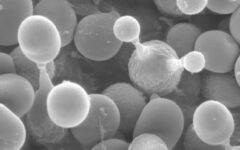Over 95% of the world’s population has health problems, with over a third having more than five ailments
1 August 2023 2023-08-01 22:42Over 95% of the world’s population has health problems, with over a third having more than five ailments

Over 95% of the world’s population has health problems, with over a third having more than five ailments
Source: The Lancet
Summary: Just one in 20 people worldwide (4·3%) had no health problems in 2013, with a third of the world’s population (2·3 billion individuals) experiencing more than five ailments, according to a major new analysis.
Just one in 20 people worldwide (4·3%) had no health problems in 2013, with a third of the world’s population (2·3 billion individuals) experiencing more than five ailments, according to a major new analysis from the Global Burden of Disease Study (GBD) 2013, published in The Lancet.
Moreover, the research shows that, worldwide, the proportion of lost years of healthy life (disability-adjusted life years; DALYS [1]) due to illness (rather than death) rose from around a fifth (21%) in 1990 to almost a third (31%) in 2013.
As the world’s population grows, and the proportion of elderly people increases, the number of people living in suboptimum health is set to rise rapidly over coming decades, warn the authors.
The findings come from the largest and most detailed analysis to quantify levels, patterns, and trends in ill health and disability around the world between 1990 and 2013.
In the past 23 years, the leading causes of health loss have hardly changed. Low back pain, depression, iron-deficiency anemia, neck pain, and age-related hearing loss resulted in the largest overall health loss worldwide (measured in terms of YLD — Years Lived with Disability — ie, time spent in less than optimum health [2]) in both 1990 and 2013.
In 2013, musculoskeletal disorders (ie, mainly low back pain, neck pain, and arthritis) and mental and substance abuse disorders (predominantly depression, anxiety, and drug and alcohol use disorders) accounted for almost half of all health loss worldwide.
Importantly, rates of disability are declining much more slowly than death rates. For example, while increases in rates of diabetes have been substantial, rising by around 43% over the past 23 years, death rates from diabetes increased by only 9%.
“The fact that mortality is declining faster than non-fatal disease and injury prevalence is further evidence of the importance of paying attention to the rising health loss from these leading causes of disability, and not simply focusing on reducing mortality,” [3] says Theo Vos, lead author and Professor of Global Health at the Institute of Health Metrics and Evaluation, University of Washington, USA.
The GBD 2013 Disease and Injury Incidence and Prevalence Collaborators analysed 35,620 sources of information on disease and injury from 188 countries between 1990 and 2013 to reveal the substantial toll of disabling disorders and the overall burden on health systems from 301 acute and chronic diseases and injuries, as well as 2337 health consequences (sequelae) that result from one or more of these disorders.
Key findings include:
In 2013, low back pain and major depression ranked among the top ten greatest contributors to disability in every country, causing more health loss than diabetes, chronic obstructive pulmonary disease, and asthma combined.
Worldwide, the number of individuals with several illnesses rapidly increased both with age and in absolute terms between 1990 and 2013. In 2013, about a third (36%) of children aged 0-4 years in developed countries had no disorder compared with just 0·03% of adults older than 80 years. Furthermore, the number of individuals with more than ten disorders increased by 52% between 1990 and 2013.
Eight causes of chronic disorders — mostly non-communicable diseases — affected more than 10% of the world population in 2013: cavities in permanent teeth (2·4 billion), tension-type headaches (1·6 billion), iron-deficiency anemia (1·2 billion), glucose-6-phosphate dehydrogenase deficiency trait (1·18 billion), age-related hearing loss (1·23 billion), genital herpes (1·12 billion), migraine (850 million), and ascariasis (800 million; giant intestinal roundworm).
The number of years lived with disability increased over the last 23 years due to population growth and aging (537·6 million to 764·8 million), while the rate (age-standardised per 1000 population) barely declined between 1990 and 2013 (115 per 1000 people to 110 per 1000 people).
The main drivers of increases in the number of years lived with disability were musculoskeletal, mental, and substance abuse disorders, neurological disorders, and chronic respiratory conditions. HIV/AIDS was a key driver of rising numbers of years lived with disability in sub-Saharan Africa.
There has also been a startling increase in the health loss associated with diabetes (increase of 136%), Alzheimer’s disease (92% increase), medication overuse headache (120% increase), and osteoarthritis (75% increase).
In central Europe, falls cause a disproportionate amount of disability and health burden, ranking as the second leading cause of disability in 11 of 13 countries. In many Caribbean nations anxiety disorders ranked more highly, and diabetes was the third greatest contributor to disability in Mexico, Nicaragua, Panama, and Venezuela. Disability from past war and conflict was the leading contributor to health loss in Cambodia, Nicaragua, Rwanda, and ranked second in Vietnam.
According to Professor Vos, “Large, preventable causes of health loss, particularly serious musculoskeletal disorders and mental and behavioural disorders, have not received the attention that they deserve. Addressing these issues will require a shift in health priorities around the world, not just to keep people alive into old age, but also to keep them healthy.”
FOOTNOTES:
This study was funded by the Bill & Melinda Gates Foundation.
[1] Years of healthy life lost are measured in terms of disability adjusted life years (DALYS). These are worked out by combining the number of years of life lost as a result of early death and the number of years lived with disability.
[2] Years lived with disability (YLD) calculated by combining prevalence (proportion of the population with the disorder in any given year) and the general public’s assessment of the severity of health loss (disability weight).







